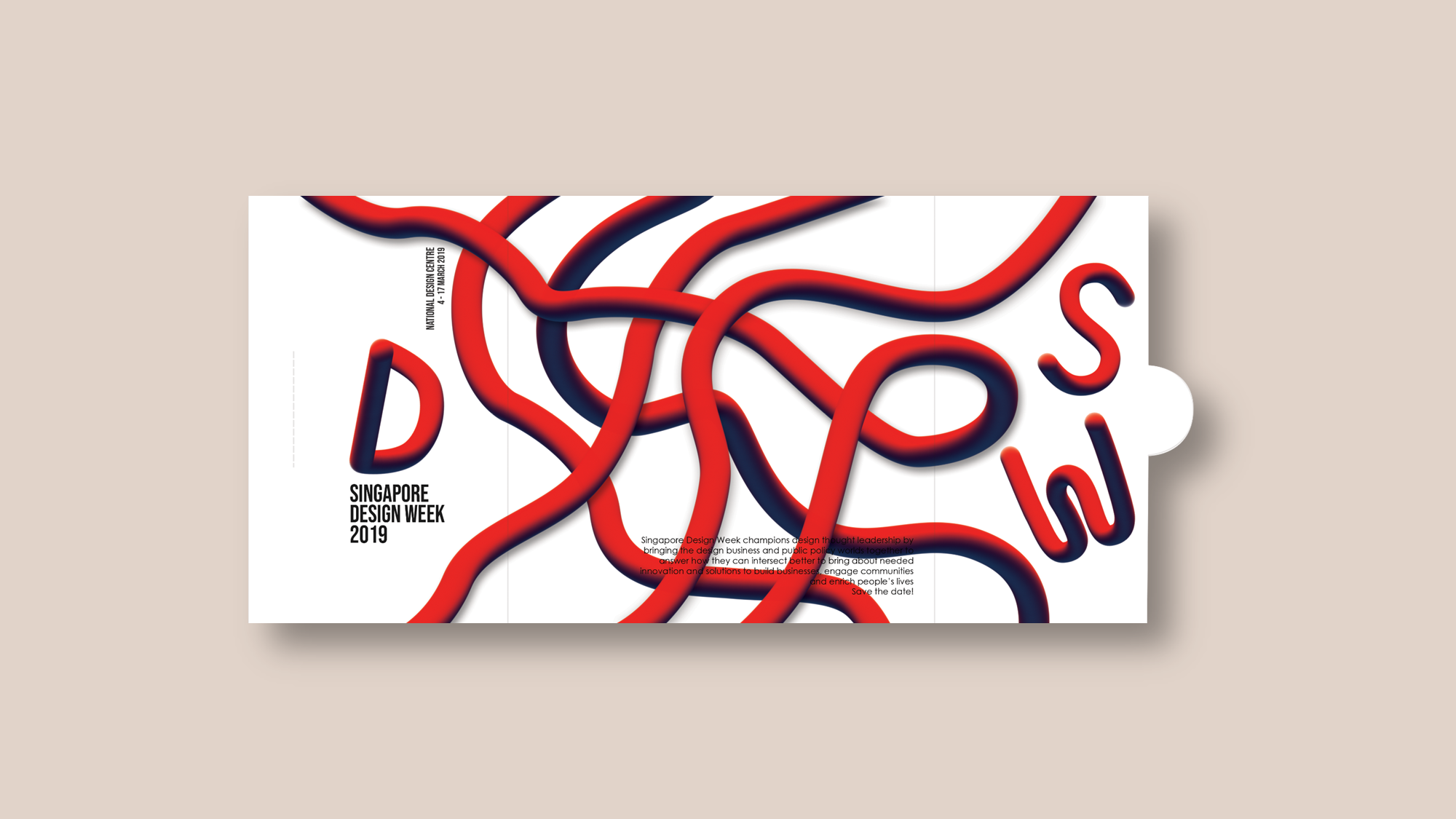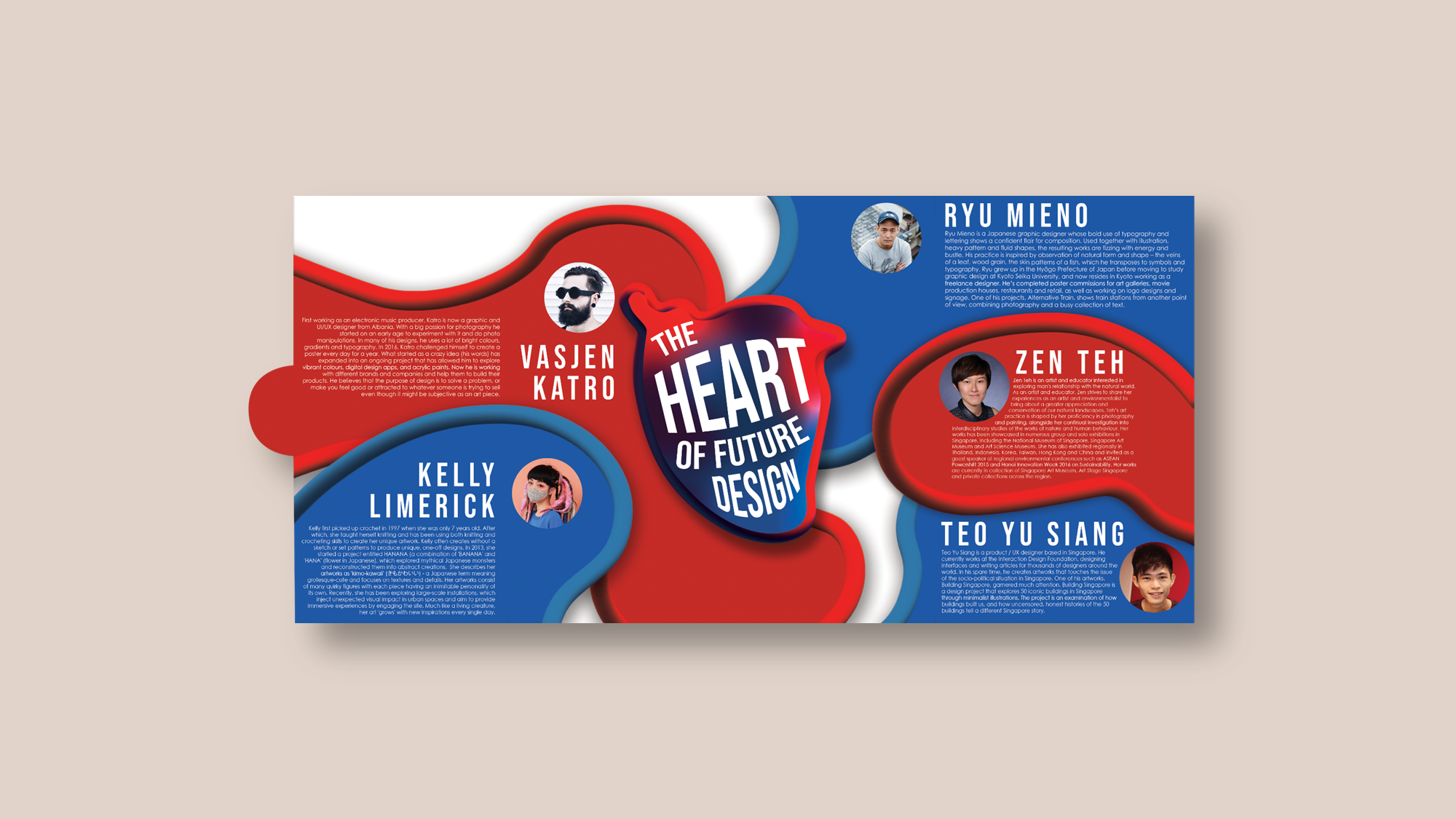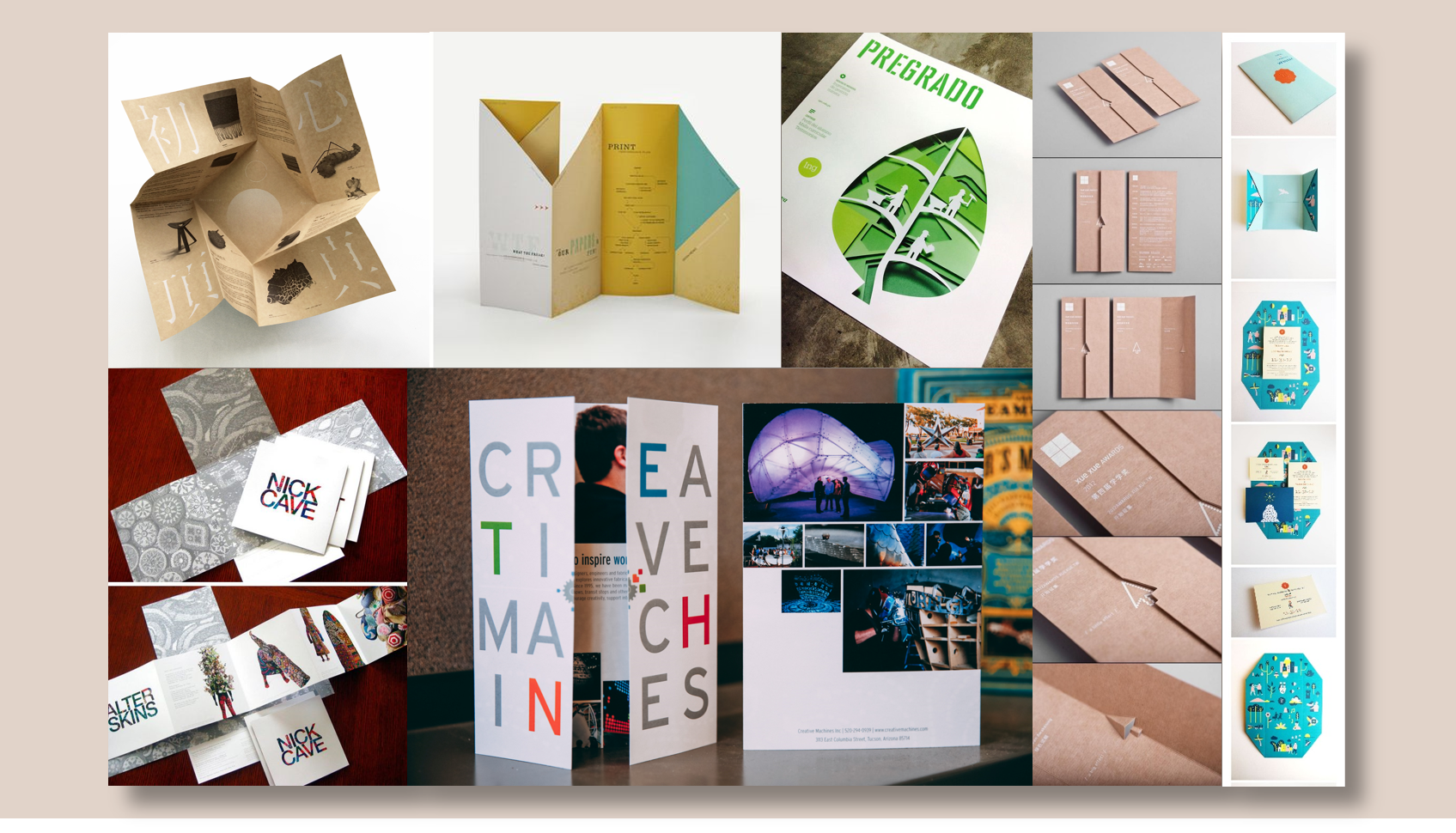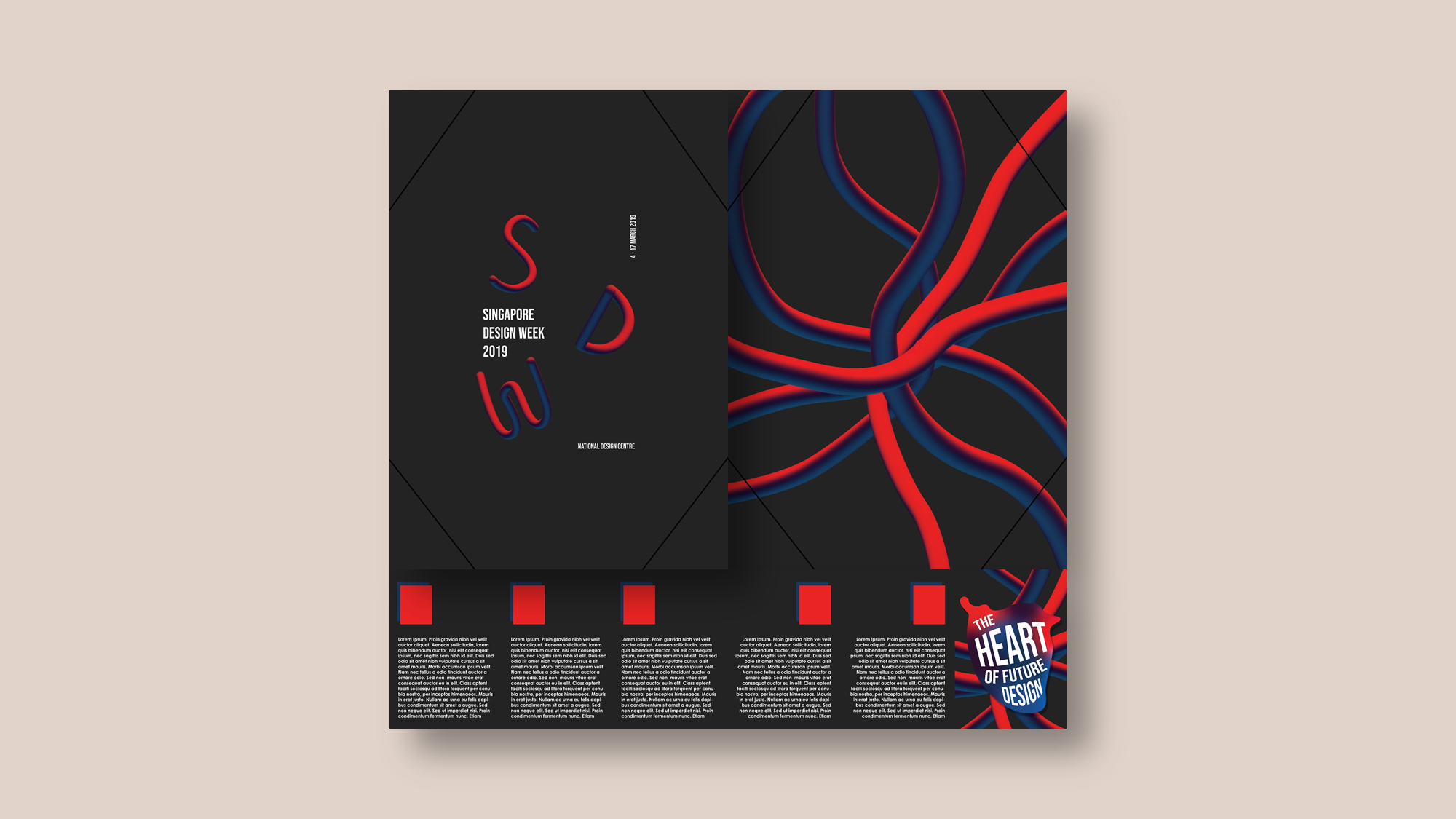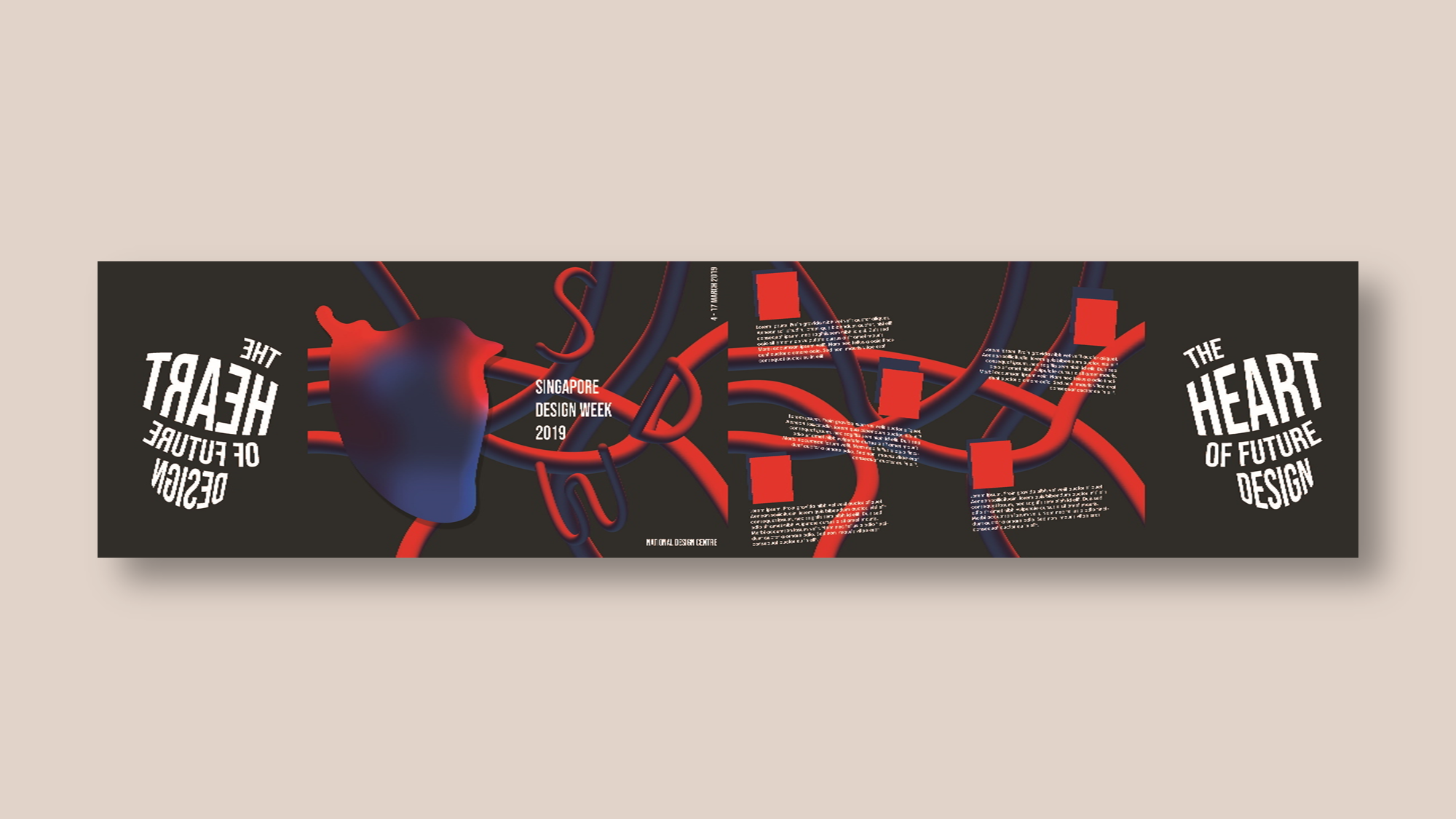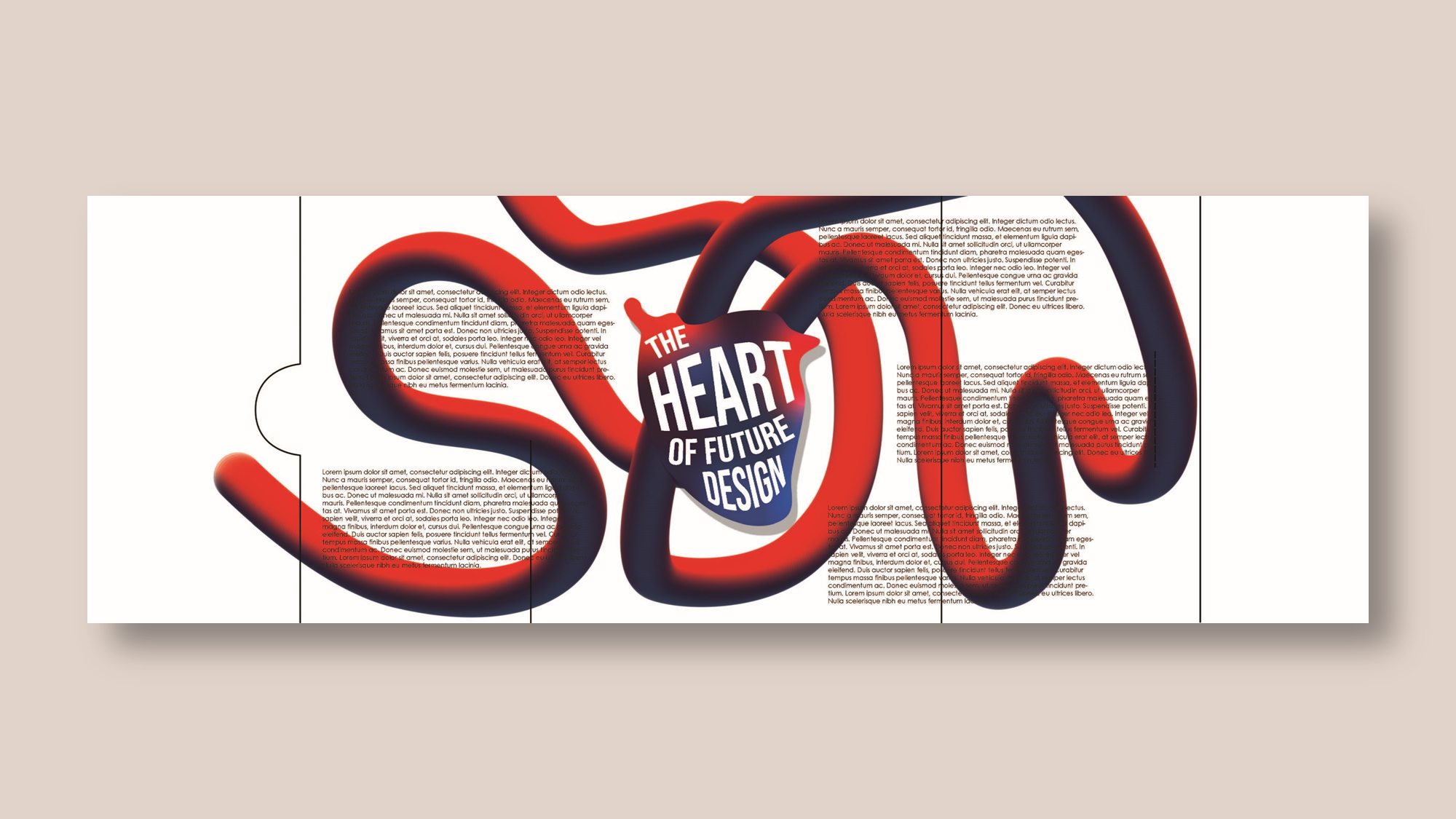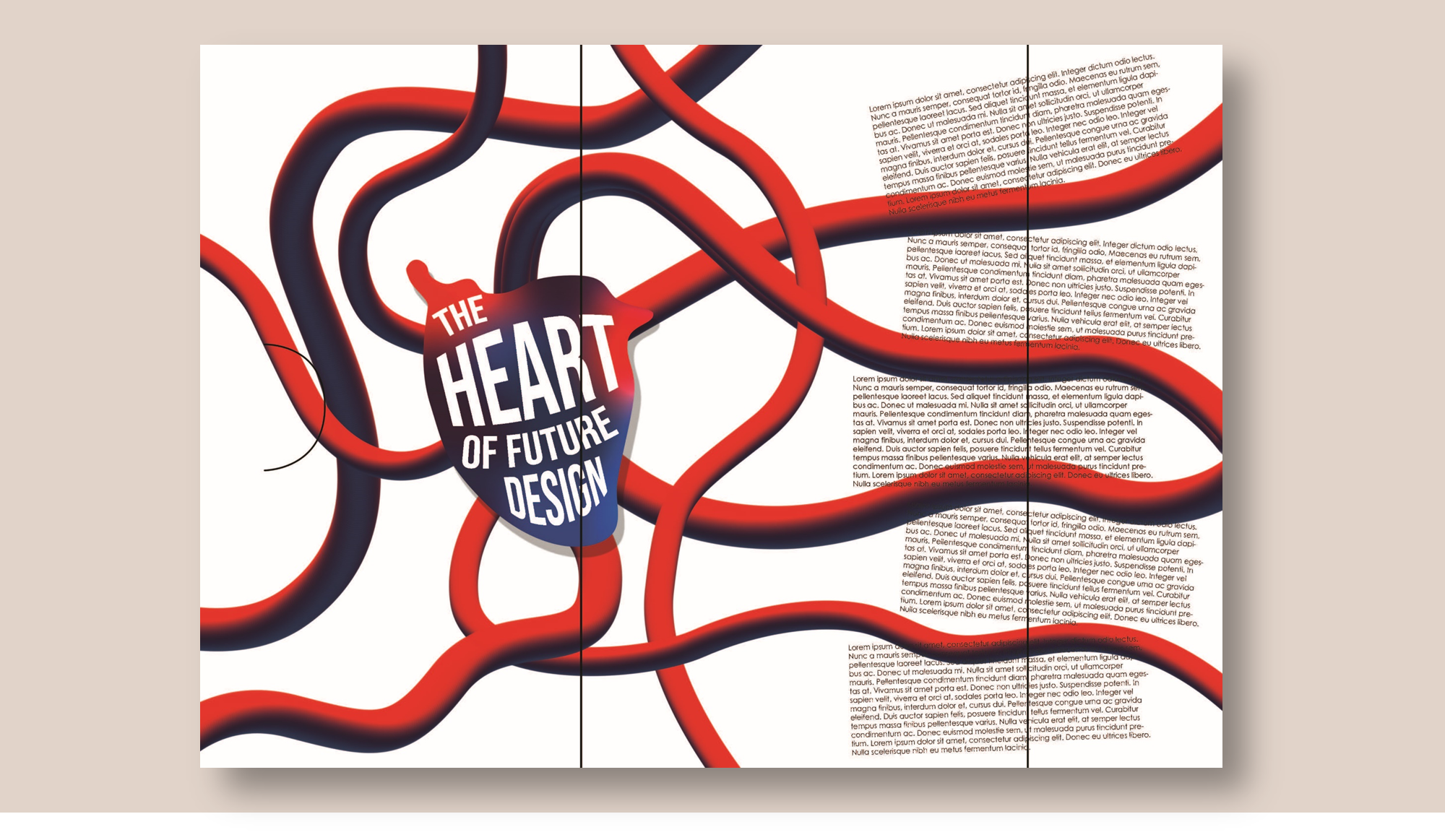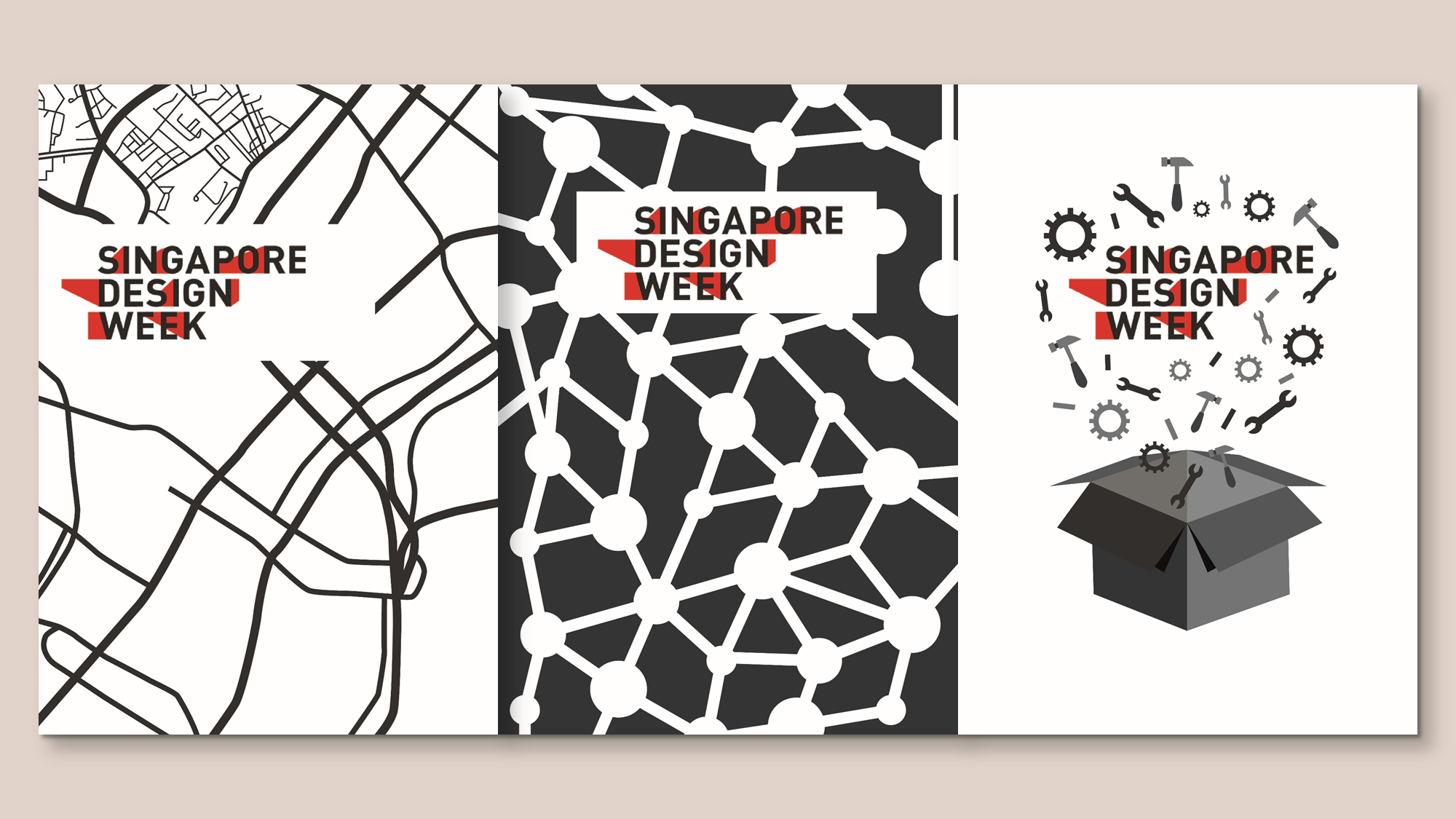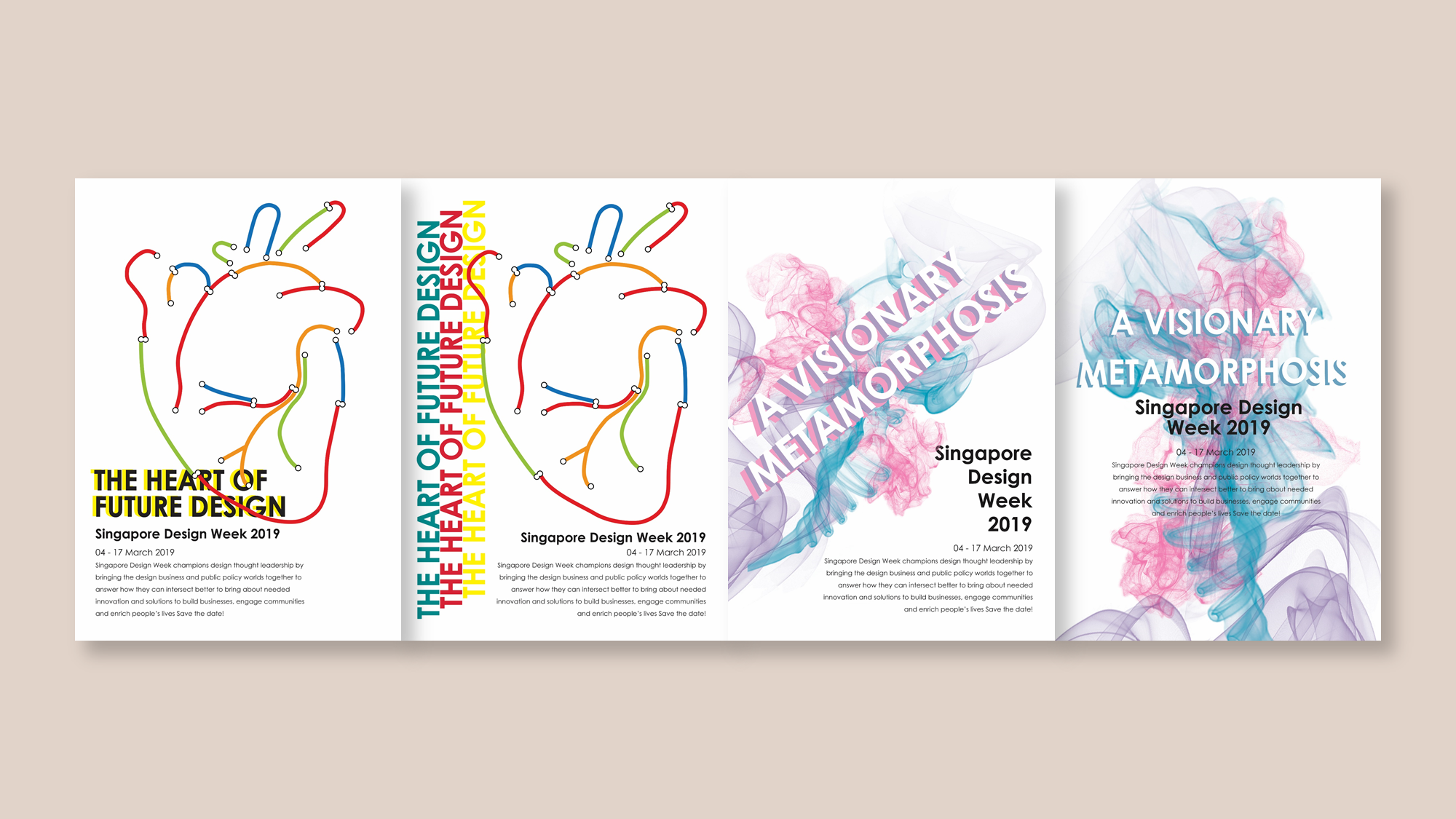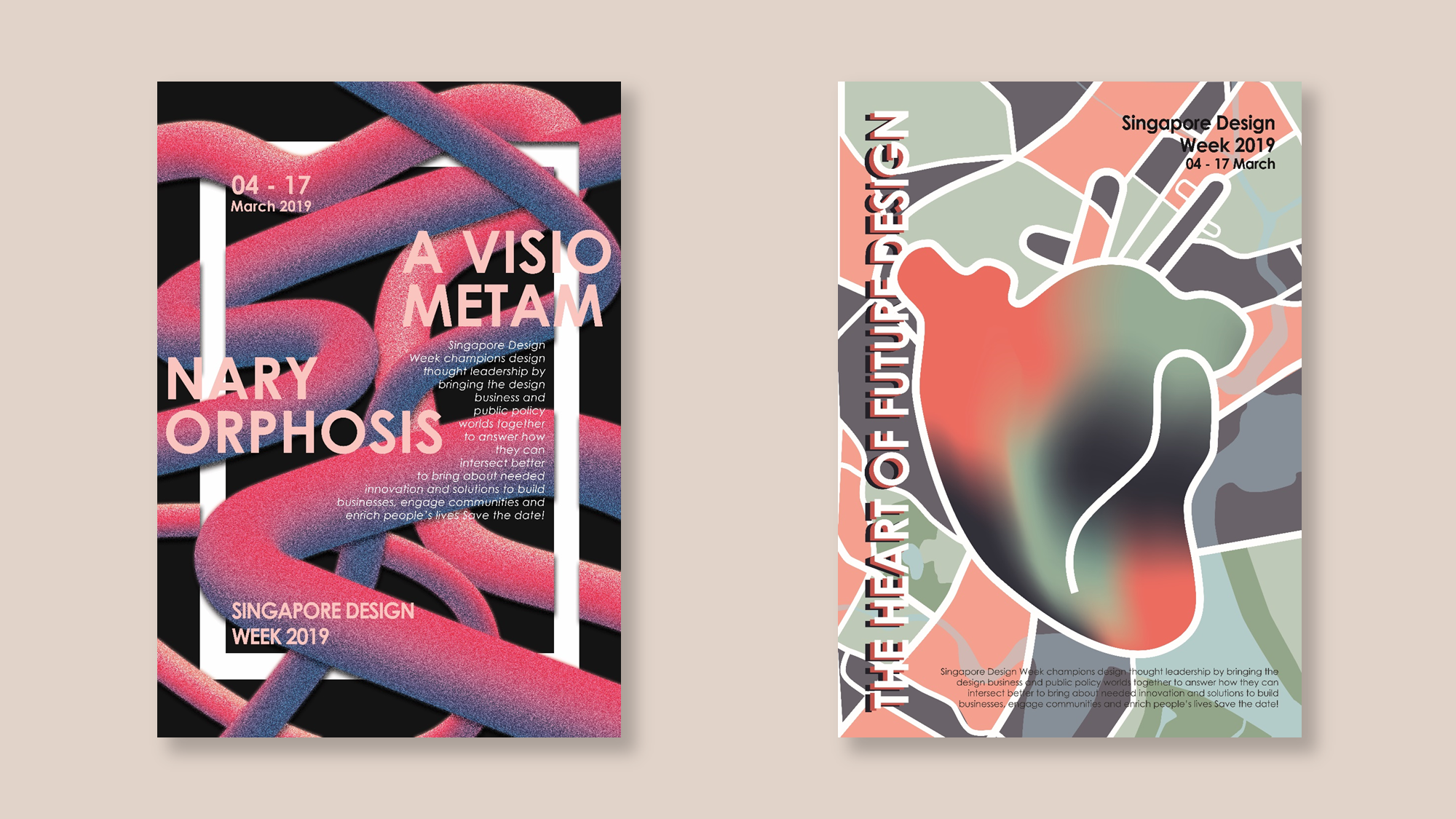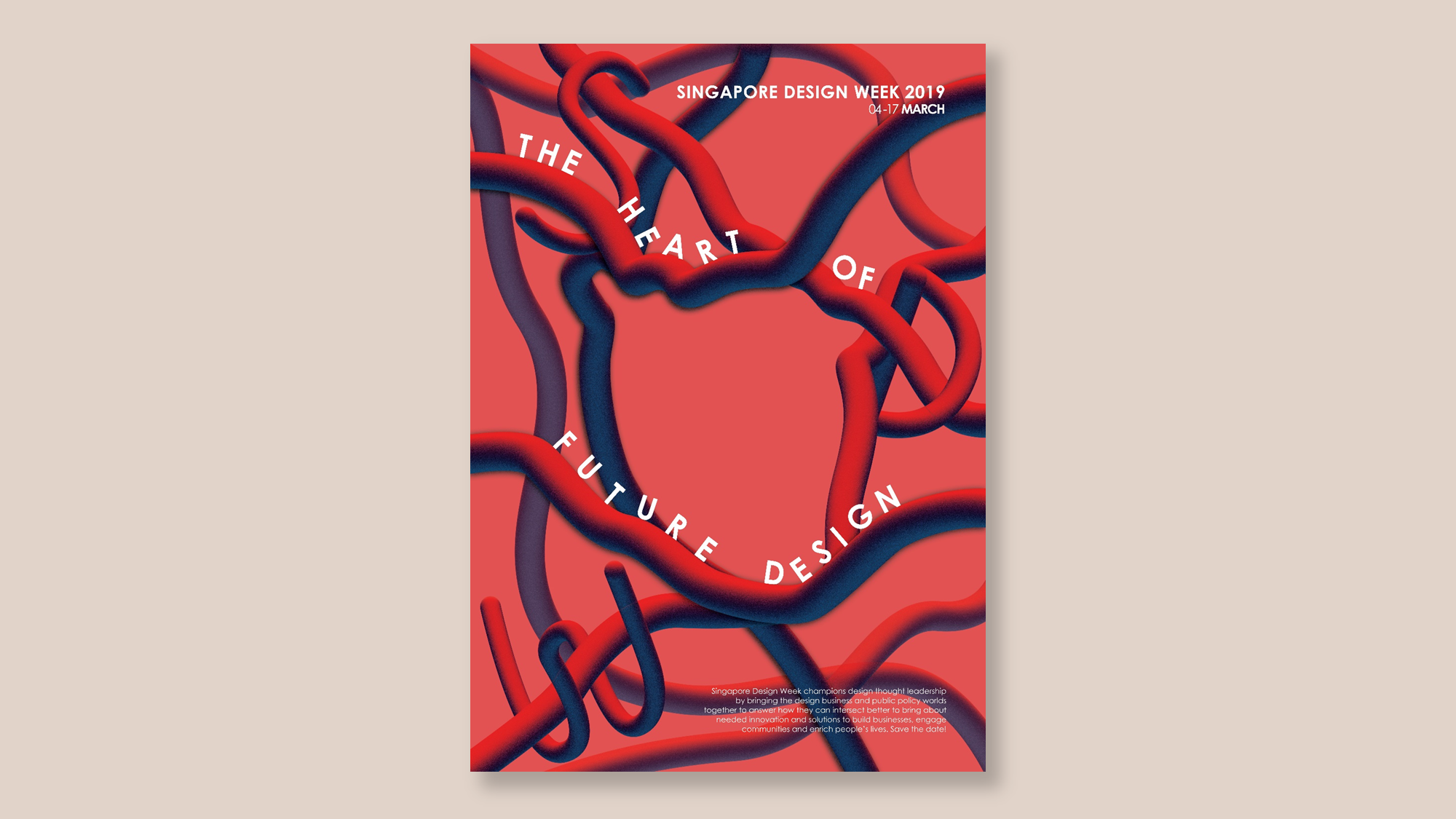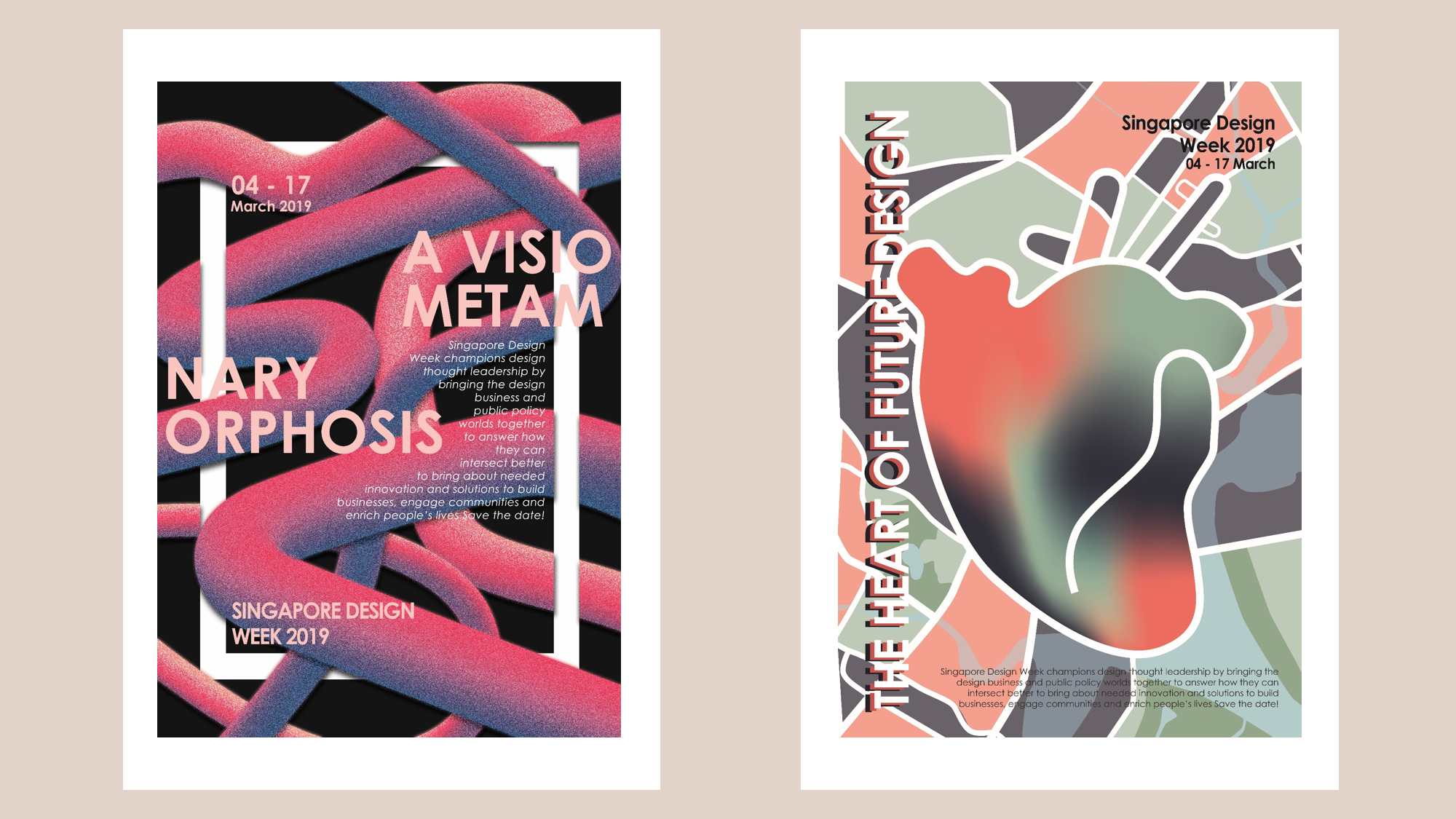Building on the idea of “The Heart of Future Design”, I created a brochure with the same elements as the poster as well as creating new ones.
I decided to use the gate fold with a simple cut out and slit to keep the fold from being ajar. This was also to illustrate the idea of viewers having to unlock the brochure to get to the “heart” which is the first thing you see when you open the brochure.
Outside
For the outside of the brochure, I wanted to keep it simple with the interlacing veins running around. Also by placing “SDW” and “Singapore Design Week” at the front and central cover of the brochure, allows viewers to immediately know the purpose of the brochure.
Initially, while doing the mockup, I didn’t realise that because the two sides meet in the center, the veins should I align for it to appear to flow properly. However, I decided to prevent having any veins intersecting the central area of the to ensure that the focus is on the title “SDW”. I also made use of the veins to aid the gaze towards the title.
Inside
To create a contrast between the inside and outside of the brochure, I decided to use a bright red and blue. By creating a new element which is the blood cells looking blobs, it also creates an element of surprise from the cover of the brochure. I left several white areas to allow for some breathing spaces. The main issue I had while creating this composition was alignment. I was trying to avoid having any images or words cutting across the fold.
Improvements
Here are some comments received during critique:
- While trying to keep to the 150 word limit, I had to resort to keeping the words small. The feedback received was that the words were too small, and that I could increase the size of the brochure. The margins and text were also too tight.
- I could have added more white areas of the right side of the inside brochure to balance the composition out better.
- For the outside of the brochure, the blurb could not be seen. I should have considered moving the veins around to allow for room for the blurb.
This comes to the end of my VC1 journey. To have a look at the design process, click here design process.

